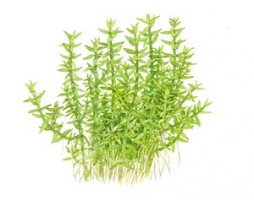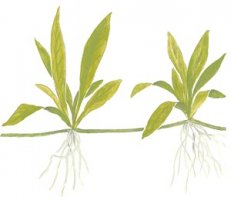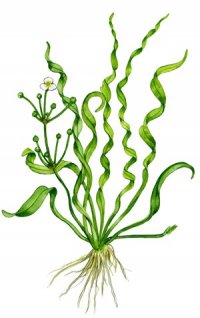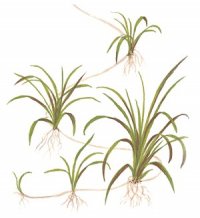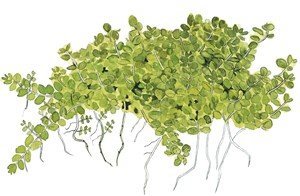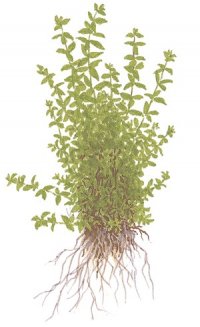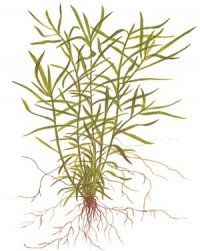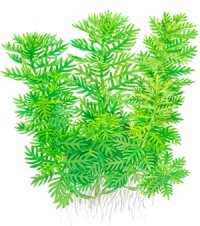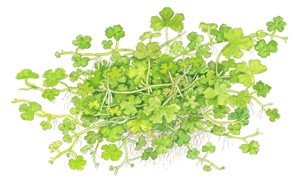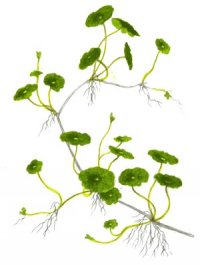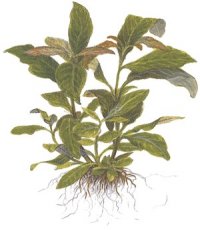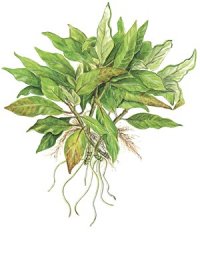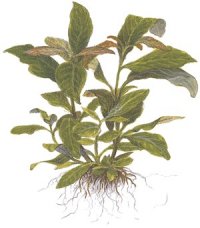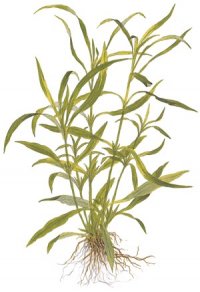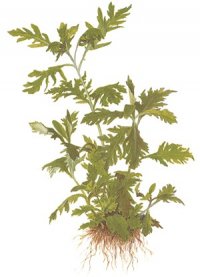-
You are viewing the forum as a Guest, please login (you can use your Facebook, Twitter, Google or Microsoft account to login) or register using this link: Log in or Sign Up
Aquatic Plants
All aquatic plant database
.
Gratiola viscidula originates from Northern America and is relatively new to the aquatic hobby. The somewhat ‘thorny’ appearance of the submersed form makes it very distinct and easily recognizable.
It is quite easy to grow and prefers good light. By regular trimming it can be kept very low, almost carpeting, but will also present itself well as a fore/mid-ground cushion-plant.
Each stem is approximately 1-2 cm wide and can become 10+ cm tall. The stem willingly branches and spreads giving...
Helanthium ‘Quadricostatus’ from South America has characteristic light green leaves 10-15 cm long which offer a great contrast to the darker aquarium plants. It is most beautiful when planted in groups, each rosette becoming 15-20 cm wide. Thrives well even at a rather low light.
In good conditions, it produces runners which spread over the bottom. Very pale leaves are a sign of a shortage of micro-nutrients. There is some confusion about the name of this plant, and it has been sold as...
Helanthium 'Vesuvius' (previously called Echinodorus 'Vesuvius') is a cultured species based on Helanthium angustifolia from Oriental Aquarium Plants.
The narrow and twisted green leaves makes it an unusual addition to the Helanthium family. The rosette species grows vigorously with many medium length and narrow leaves (10-20 cm tall), and is highly decorative as a solitary plant (rosette 10-15 cm wide). 'Vesuvius' spreads readily with runners. An easy and undemanding plant that requires...
Previously named Echinodorus tenellus 'Green'.
This small rosulate plant will easily make a 5-10 cm high carpet when the light is good and the bottom layer nutritious. Even at an intense light level this variety remains fresh green unlike the usual, more reddish, Helanthium tenellum.
An easy and quite undemanding foreground plant.
Source: Tropica
Hemianthus callitrichoides is one of the smallest aquarium plants in the world, and creeps over the bottom with millimetre-sized, round leaves. Hemianthus callitrichoides is an attractive and popular foreground plant for small aquariums.
It is not a difficult plant, but it requires good conditions such as enough light, added CO2, water circulation and fertilizer to thrive. If these conditions are hard to create, you may use Micranthemum ‘Monte-Carlo’ as an alternative, as it is less...
Hemianthus micranthemoides from North America is a graceful plant whose small, arched leaves make it look like a miniature version of Egeria. It has a characteristic trailing growth in intensive light, so it can be used as a foreground plant (stems from 10-20 cm tall, 2-3 cm wide). A compact group of Hemianthus micranthemoides is very beautiful with its small, light-green leaves.
In terrariums the plant forms a compact cushion.
Used to be called Micranthemum micranthemoides.
Source: Tropica
Heteranthera zosterifolia from South America is an extremely beautiful plant, which forms a lot of side shoots and thus quickly forms a bushy plant group.
Stems can become 30-50 cm tall and 6-12 cm wide. Leaves often become black on the back. In strong light growth is intensive, and the plant must be pruned before it becomes so compact that no light reaches the lower leaves. Water roots often form on the stem. Those are easily cut and replanted.
In open aquariums, it forms small blue...
The stem plant Hottonia from Asia and Europe is an unassuming and easy beginner plant. The many curved shoots with fanned and intensely light green leaves quickly create a close group. Each stem becomes 4-6 cm wide and 10-30 cm high. Frequent cutting of the long shoots ensures growth from the bottom of the plant, and maintains the close, bushy form.
The plant’s wide form of growth makes it very suitable for the passage between very low and tall plants. The bright green colour creates...
Hydrocotyle sp.'Japan' is the popular name of the plant in different plant forums. It is a variant of Hydrocotyle tripartita from South-East Asia. It is characterised by fast, compact growth and small, intense green leaves on vertical stems.
The plant is carpet-forming (5-10 cm tall) and its compact growth can be promoted by physically pressing the carpet with your hand when maintaining your aquarium (mechanical retardation). Carpet formation and compact growth do best in good light...
Unlike other Hydrocotyle species, this plant retains its trailing growth form. Verticillata originates from America and becomes 3-7 cm tall. Optimum growth is only achieved in strong light and soft, slightly acidic water. It does not need to be rooted, but can be used as a floating plant.
Hydrocotyle verticillata is definitely a foreground plant, but also suitable for garden ponds. If the soil is kept moist, you may even use it as an indoor plant.
Source: Tropica
Hygrophila corymbosa is an undemanding starter plant that originates from Asia. In the aquarium it will spread fast and create bright green, long and wide leaves.
It is a fast growing plant that must be pruned frequently. New shoots will spread from the stem and make the plant look bushier. The cuttings can be re-planted in the bottom of the aquarium where new roots form quickly.
A bundle of stems or young plants gathered in an anchor. Remove the anchor and split into separate plants...
A very compact variety of Hygrophila corymbosa, with the leaves set close to the stalk.
Forms numerous side shoots, enhancing the compact appearance. The leaves are a dark brownish-green, when the plant leaves the nursery, but after a transitional period in the aquarium they turn pale green and silver-white on the underside.
In strong light, the newest leaves may become reddish brown and in dimmer light, the oldest ones die away after a while. New side shoots often forms to replace the old...
‘Siamensis’ originates from Thailand and have stems from 15-40 cm and 10-15 cm wide. Leaves are light green and dense.
Plant several stems in a group at the background of the aquarium, cut off the top shoots when they reach the water surface and replant these. They will soon form new roots and continue growing. In open aquariums Hygrophila corymbosa 'Siamensis' grows easily above the water surface, where it forms blue-green leaves and small blue flowers. It grows fast and the shoots should...
This plant originates from South America and stems become 25-60 cm long with 10 cm long leaves. Under water Hygrophila costata has relatively narrow leaves which are grouped close together. Plants sold in the shops are normally cultivated above water, and have rounder leaves with larger gaps between them.
Hygrophila costata was called Hygrophila corymbosa 'Angustifolia' until recently.
Source: Tropica
Hygrophila difformis from Asia is beautiful and undemanding stem plant.
Stems becomes 20-30 cm tall and 6-12 cm wide. A plant for beginners, which will help create balance in the aquarium from the start. Its rapid growth helps prevent algae because the plant absorbs a great number of nutrients from the water. The shortage of micronutrients leads to pale leaves, which may be an indication that the aquarium needs fertiliser.
In large aquariums its lobed leaves can create a distinctive group...

